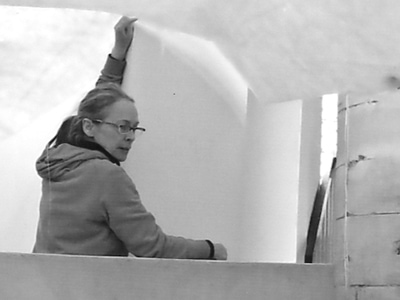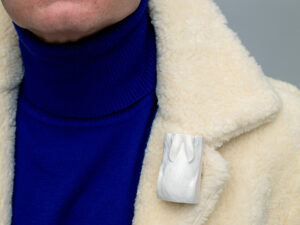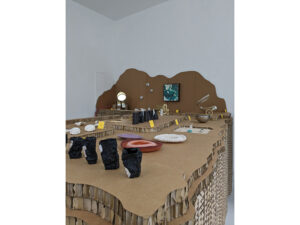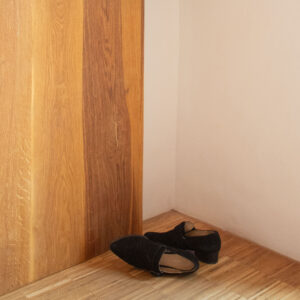Postmodernism is an ambitious and extensive exhibition. It is the latest in a loose series of exhibitions of major art movements, such as art nouveau and art deco, to be held at the V&A Museum. Like postmodernism itself, the exhibition is a complex and sometimes perhaps, a confusing experience. As an introduction, visitors read: ‘… of all the movements in art and design history, postmodernism is perhaps the most controversial’ and ‘with its unstable mix of theatrical and theoretical, the movement defies definition.’ This elusive and inconsistent subject is what the exhibition aims to examine.
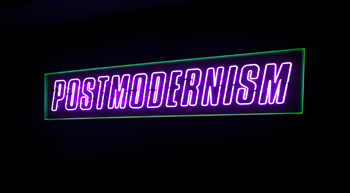
The exhibition traces the evolution of postmodernist practice over a period of twenty years. It begins with the growth of disillusionment with modernism; demonstrates the profusion of ideas that were produced and follows through to its connection with commercialism and what is considered its inevitable decline. The transition from marginal to mainstream is shown through architecture, design, fashion, video, dance, graphic design, fine art and craft.
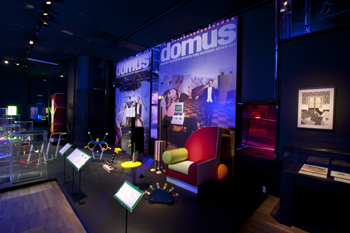
The exhibition provides a good representation of postmodernism’s main ingredients – the messy, high-voltage energy; the freedom to mix high and ‘low’ culture; the upheaval of established aesthetics; the accommodation of different viewpoints; the correlation of human and machine; the overstepping of discipline boundaries; the use of bricolage; notions of reproduction, copying and appropriation and a sensibility of style over substance and an increasing delight in superficiality. Overall, it is the fusion of the dynamic forces of destruction and creation that the exhibition makes explicit. Some of the pieces still look good, while others look thin and insubstantial.
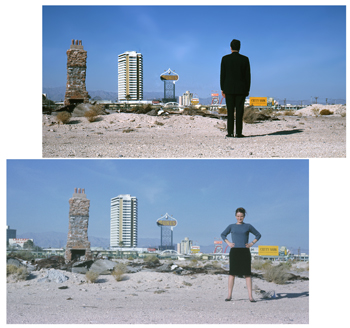
Of the three small groups of jewelry shown, the first is a selection of Bernard Schobinger’s work: Shards from Moritzplatz, Berlin (1983-4) made up of antique crystal beads combined with broken television screens and a dangerously sharp looking piece of broken glass from a Cola-Cola bottle; Wahnsinn Macht Frei (Madness Sets You Free) (1980) a scratchily etched gold brooch and Hiroshima Mon Amour (1987) which combines several casually cut circles of thin metal tied together with a broken part of a ceramic plate showing a tranquil Japanese scene. All great pieces but rather badly lit and set quite low so you have to stoop to see them. They are displayed beside Ron Arad’s concrete stereo, Bill Woodrow’s Twin Tub with Guitar, Danny Lane’s glass chair and shown under the loop of the apocalyptical scene in Ridley Scott’s film Blade Runner in which Los Angeles bursts into flames.

The exciting process of challenging the existing order of things, questioning values and blurring boundaries certainly characterized the practice of jewelry in the late 1970s and early 1980s. I started my career in the climate of overturning traditions, when jewelry designers were questioning the adherence to conservative forms, the use of precious materials and a predominance of decoration over comment. There was space for something much more exciting and relevant and a rush of energy produced work that communicated a different set of values. The work in this section resonates with the open ended and experimental approach that pervaded the contemporary jewelry world at that time.
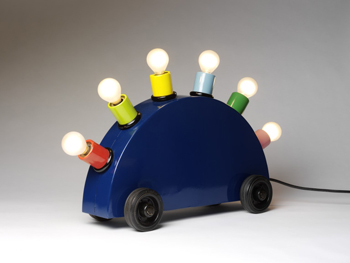
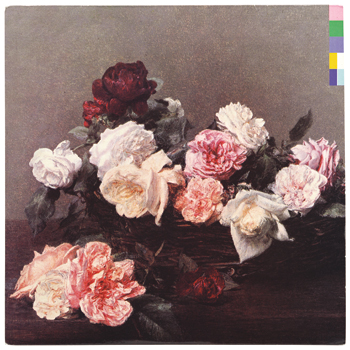
The third display of jewelry is in a small section titled ‘Craft.’ The wall text suggests that it might be thought that craft, standing for authenticity and direct, deep knowledge and connection with materials, isn’t sympathetic with notions of postmodernism, but the choice of three important neckpieces by Gijs Bakker, Otto Kunzli and Robert Smit share a showcase and work well together. Bakker’s neckpiece Phorzheim 1780 (1985) embodies many of the notions of postmodernism. It is an image of an existing necklace and in quoting it, Bakker re-presents and re-evaluates old values to do with material wealth. There is a translation from precious to non-precious; from historical to contemporary; from a unique piece to one, which could be reproduced; from real to replica; from handmade to machine processed. Kunzli’s Fragment Neckpiece (1986) in which part of a gold-leafed picture frame hangs on a steel cable, also harks back to a past where precious frames enhanced the considered value of precious paintings. By equating the tradition of the use of gold for jewelry and the gold surfaces on elaborate picture frames, he is widening the hitherto narrow references that jewelry had previously been limited by. Smit demonstrates in Square (1990) a keen understanding of the properties of gold and treating it is as though it were any other material shows a healthy disregard for any special treatment its reputation might demand.
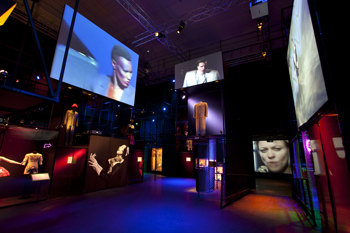
One of the last pieces in the exhibition, Ai Wei Wei’s audacious Han Dynasty Vase with Coca-Cola Logo (1994) for me summed up the whole postmodernist movement. The ancient and extremely valuable vase is painted over with the Coca-Cola logo in pink. Here is the conflict of historical and contemporary values, the clash of the sacrosanct and the superficial, the collision of cultures together with an audacious wit. The label explains that in the process of destroying the ancient treasure, its value has increased greatly.
